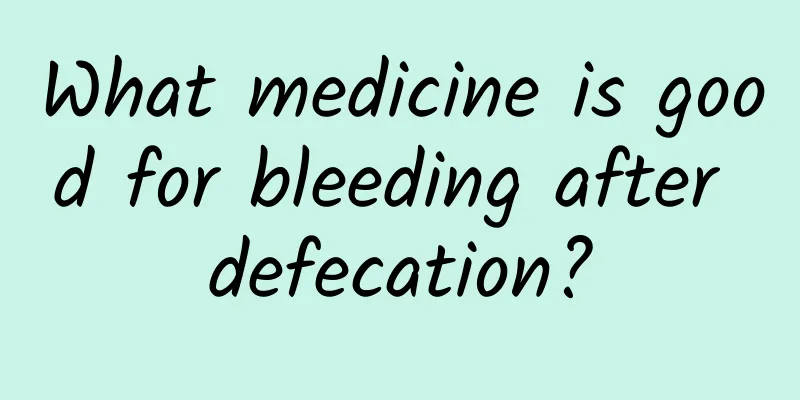Spitting gastric polyps

|
After the appearance of gastric polyps, some patients will experience nausea and vomiting. There are no obvious symptoms of spitting gastric polyps in the early stages. Therefore, we must have a certain understanding of the characteristics of this disease. When suspected symptoms are found, we should go to the hospital for examination in time. Once confirmed, we should take appropriate methods for treatment as soon as possible. Let’s look at the symptoms and main treatments of gastric polyps. There are usually no clinical symptoms in the early stages of the disease or when there are no complications. When symptoms occur, they often manifest as dull pain in the upper abdomen, bloating, discomfort, and in a few cases, nausea and vomiting. Patients with combined erosion or ulcer may have upper gastrointestinal bleeding, which is often manifested as a positive fecal occult blood test or black stools. Hematemesis is relatively rare. Pedunculated polyps located in the pyloric region may prolapse into the pyloric duct or duodenum, causing pyloric obstruction. Polyps growing near the cardia may cause difficulty in swallowing. treat 1. Endoscopic treatment Endoscopic resection is the preferred method for treating gastric polyps. The main methods include high-frequency electrocoagulation resection, laser and microwave ablation, nylon ligation and argon plasma coagulation. (1) High-frequency electrocoagulation resection is the most widely used method at present. Its principle is to use the thermal effect generated by high-frequency current to cause tissue coagulation and necrosis to achieve the purpose of removing polyps. (2) Microwave ablation uses the principle that microwaves can cause polar molecules to vibrate and produce thermal effects, thereby causing tissue coagulation and gasification to ablate the polyps. It also has a hemostatic effect and is suitable for sessile polyps with a diameter of less than 2 cm. Smaller polyps can be ablated in one go, while larger ones require multiple treatments. (3) Laser method: The high-energy laser generated by the laser is used to irradiate the lesion site through the optical fiber introduced into the endoscopic biopsy hole. The heat energy converted from light energy causes the tissue protein to coagulate, denature and destroy, thereby achieving the treatment goal. It is mostly used to treat wide-pedunculated or sessile polyps. (4) The nylon thread and rubber band ligation method ligates the root of the polyp, causing ischemia and necrosis, thus achieving the treatment goal. The polyp falls off and forms a shallow ulcer within the first week after ligation, and forms a white scar and heals within the 3rd to 4th week. (5) Argon plasma coagulation Argon gas can conduct high-frequency electrical energy generated by tungsten electrodes through ionization, causing tissue coagulation. In recent years, it has been used in endoscopic treatment and has achieved good results. It is mainly suitable for broad-based, sessile polyps with a diameter of less than 1.5 cm. (6) The freezing method involves spraying refrigerant gas directly onto the surface of the polyp through a special catheter and the endoscopic biopsy hole, or using a special freezing rod to perform contact freezing on the lesion, causing the tissue to necrotize and fall off. (7) Radiofrequency method Radiofrequency is a type of electromagnetic wave with a frequency of 200 to 750 kHz. After entering the diseased tissue, it generates heat locally, causing the moisture to evaporate, dry out, and cause tissue necrosis to achieve the therapeutic purpose. (8) Alcohol injection method: Anhydrous alcohol is injected around the base of the polyp under endoscopy. It is generally only used to treat broad-based polyps. 2. Anti-Hp treatment Recent studies have shown that Helicobacter pylori (Hp) infection is closely related to the occurrence of hyperplastic polyps. After the successful removal of Hp infection in Hp-positive patients with hyperplastic polyps, about 40% of the patients have complete regression of polyps. 3. Surgery Indications for surgery are: (1) Sessile or sessile polyps larger than 2 cm. (2) Polyps that progressively enlarge. (3) Patients with pathological examination showing adenomatous polyps with dysplasia, suspected cancer, or cancer. |
<<: How to perform surgery for laryngeal cancer polyps
>>: Do gastric antral polyps need to be removed?
Recommend
What is Aconitum?
Many people don’t know much about Aconitum. In fa...
Improve communication skills
Humans are social animals and have to deal with d...
What diseases can hedgehog heart cure?
The hedgehog is an animal with a strange shape be...
Is folliculitis contagious?
Hair is a common sign on our skin. Folliculitis i...
Side Effects of Emblica
Emblica officinalis is a very high-quality Chines...
Can amoxicillin and honey remove freckles?
Amoxicillin is a common anti-inflammatory drug in...
What is pathological acute eyelid inflammation?
The eyelid is a very important part of the eye. I...
Traditional Chinese medicine treatment for sequelae of cerebral infarction!
Cerebral infarction is a common disease that enda...
Vulvar hemangioma
When it comes to vulvar hemangioma, I believe man...
Which pregnant women are more likely to give birth to children with cerebral palsy
Although it is difficult for a mother to get a cl...
Why do I feel bloated and want to vomit?
Gastrointestinal diseases are the most common in ...
Best treatment for herpes in children
Because children have poor physical resistance, t...
Can I get pregnant after having sex after the IUD is removed?
Many people go to the hospital to get an IUD inse...
Can fire therapy cure ovarian cysts?
Traditional Chinese medicine health care seems to...
Enlarged thyroid gland in women
Both men and women have thyroid glands. This is a...









